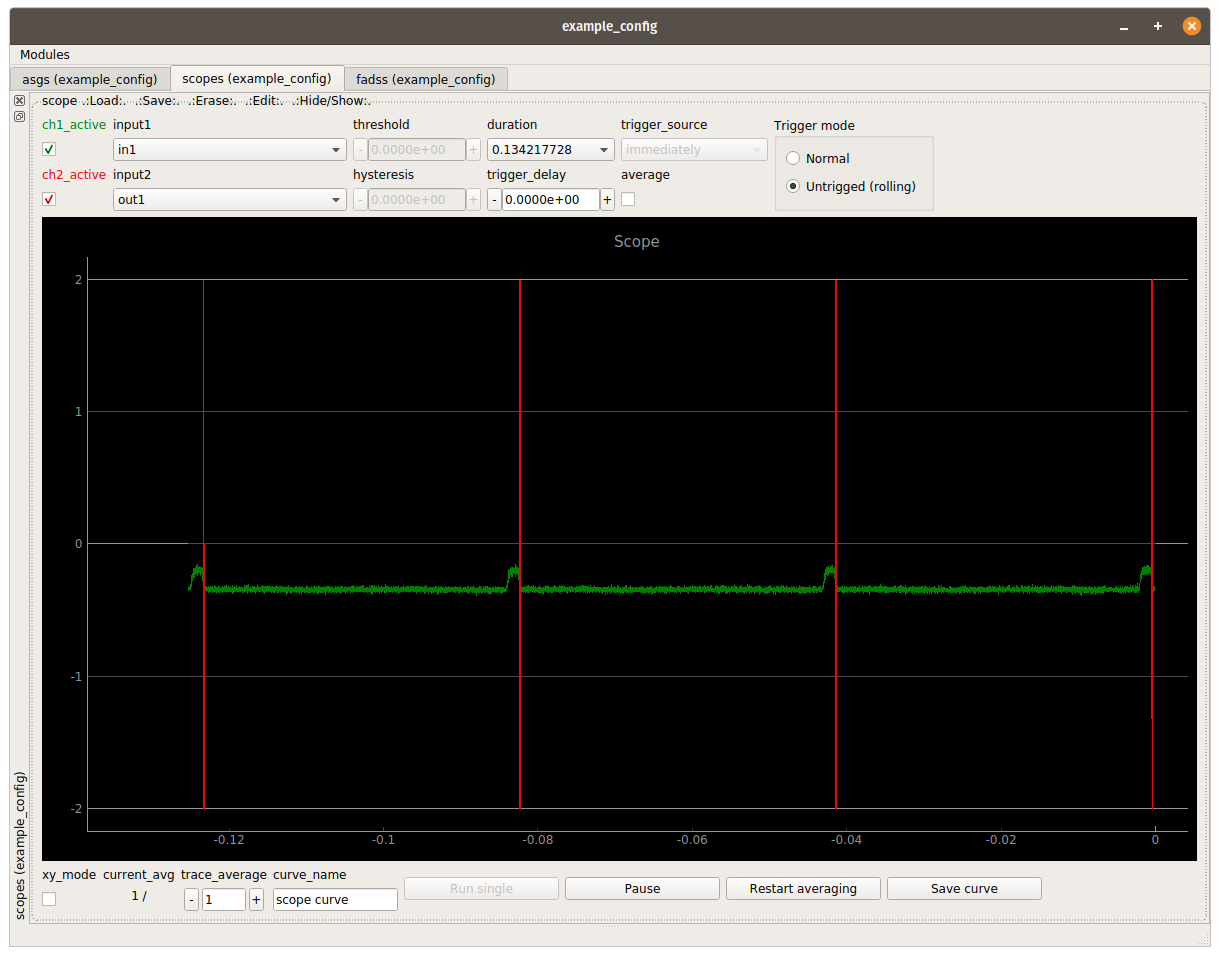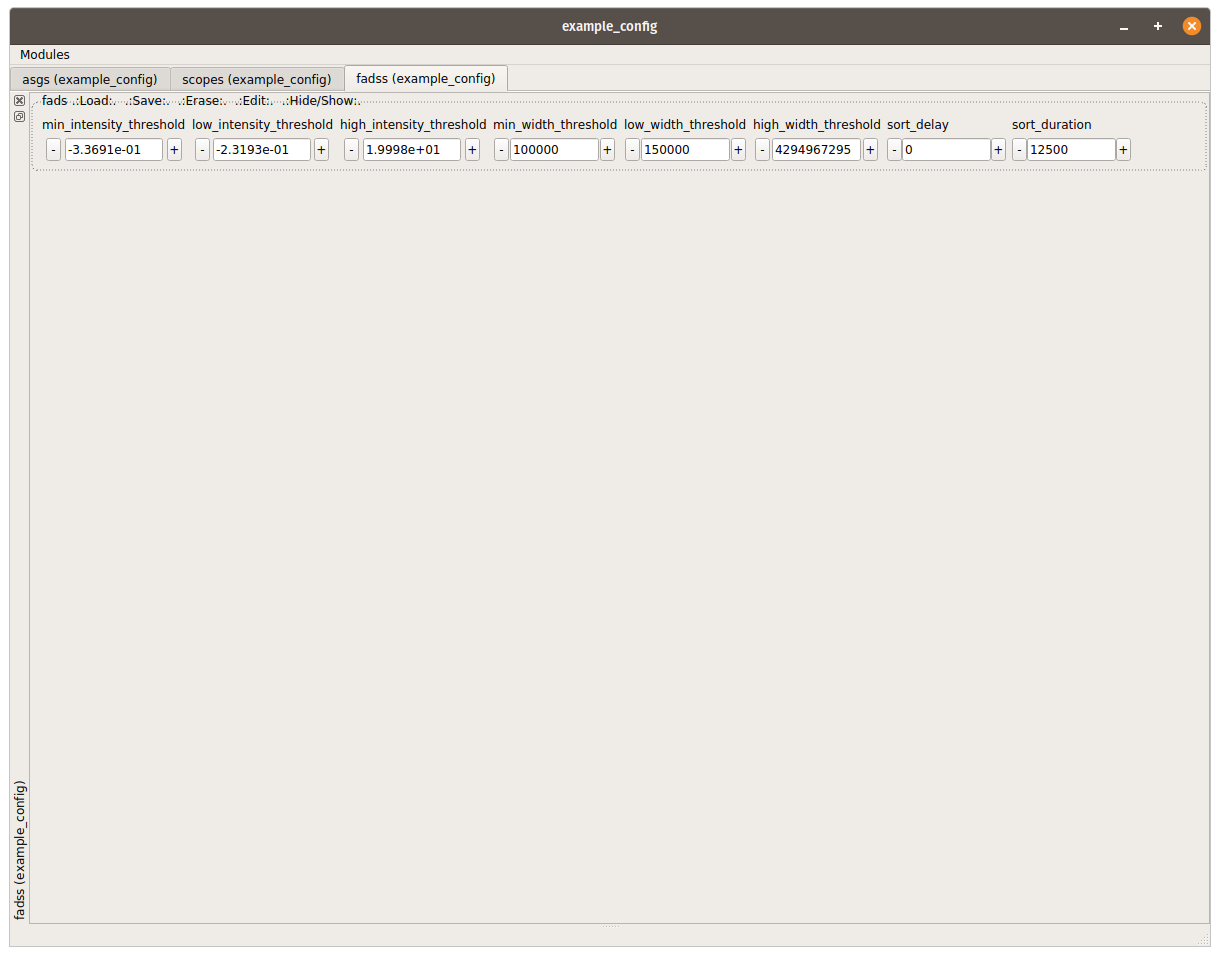-
Notifications
You must be signed in to change notification settings - Fork 0
Usage
- RedPitaya
- Cloned pyrpl repository on the open_fpga_fads branch
- Oscilloscope (for an unbiased view of what the RedPitaya is seeing and doing)
- Function generator (just for testing/evaluation purposes)
- Create a conda environment for pyrpl
conda create -y -n pyrpl-env numpy scipy paramiko pandas nose pip pyqt qtpy pyqtgraph pyyaml
activate pyrpl-env- Clone the pyrpl repository at the branch and install pyrpl
git clone https://github.com/npeschke/pyrpl@open_fpga_fads
cd pyrpl
python setup.py developFollow the pyrpl guide for preparing the hardware.
Afterwards copy the pyrpl/fads_logger directory to your RedPitaya
cd pyrpl/fads_logger
scp * root@<RedPitaya Hostname>:/root/mybin/loggerConnect to the RedPitaya over ssh and build the logger application
ssh root@<RedPitaya Hostname>
cd /root/mybin/logger
makeThis should even start the logger. For now this can be aborted using Ctrl-C
Run the following command
bash /root/mybin/logger/fads_logger > /PATH/TO/LOGFILEand replace the path with one of your liking.
CAUTION: This will overwrite the file if it already exists.
CAUTION: Keep the caveats in mind
Currently, the logfile contains the following columns:
- Droplet ID (Basic autoincrementing counter of everything that reached
min_intensity_threshold) - Droplet intensity maximum (Raw value from the ADC before conversion)
- Droplet intensity maximum (Scaled to the HV +-20V range of the RedPitaya but NOT calibrated)
- Droplet width in FPGA clock cycles (125 MHz clock)
- Droplet width in milliseconds
- Encoded droplet classification
270 -54 -0.131836 190149 1.521192 17
271 -55 -0.134277 189880 1.519040 17
272 -50 -0.122070 189561 1.516488 17
273 -51 -0.124512 190321 1.522568 1
274 -56 -0.136719 190426 1.523408 17
275 -52 -0.126953 188813 1.510504 17
276 -55 -0.134277 190356 1.522848 17
277 -55 -0.134277 190898 1.527184 17
278 -52 -0.126953 192923 1.543384 17
279 -53 -0.129395 189686 1.517488 17
280 -53 -0.129395 190988 1.527904 1
The classification is made up of a 8 bit wide word. Each bit represents a flag for a specific classification:
| Bit | Decimal | Purpose |
|---|---|---|
| 7 | 128 | Positive Droplet |
| 6 | 64 | Currently unused |
| 5 | 32 | High Width |
| 4 | 16 | Positive Width |
| 3 | 8 | Low Width |
| 2 | 4 | High Intensity |
| 1 | 2 | Positive Intensity |
| 0 | 1 | Low Intensity |
The decimal values are summed up for set flags and the sum is displayed as the encoded classifcation.
Example:
Classification: 146
Bits 76543210
||||||||
146 (in base 10) = 10010010 (in base 2 or binary)
| | ∟ Positive Intensity
| ∟ Positive Width
∟ Positive Droplet
Classification: 17
Bits 76543210
||||||||
17 (in base 10) = 00010001 (in base 2 or binary)
| ∟ Low Intensity
∟ Positive Width
Run the run_pyrpl.py script on your computer (not the RedPitaya)
python scripts/run_pyrpl config=example_config hostname=<RedPitaya Hostname>and follow the instructions for a basic setup.
- Add the
asgs,scopesand thefadssmodules to the gui. - Set the following defaults



-
Connect the photodetector to IN1 and the high voltage amplifier to OUT1
-
Run the experiment
-
Thresholds can be tweaked using the scope screen and when daisy-chaining a Oscilloscope
- Take care of potential impedance mismatches between Photodetector and the High-Z RedPitaya scope